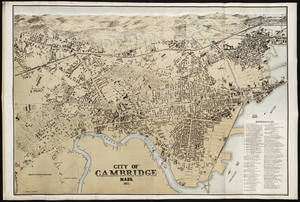
Image Credit: George Hollingsworth
Earliest source: "Alvan Clark (1804-1887)." Harvard Portrait/Clock Collections. Harvard Libraries, HUAM311226
Alvan Clark (1804-1887), who at the time of this portrait is a portrait painter himself (shown here painting), specializing in miniatures. He is also an engraver. In the early 1840s he and his sons Alvan Graham and George Basset Clark go into telescope making business as a part-time endeavor.
Sometime shortly after the Great Refractor is installed (1847), Alvan Clark has the opportunity to use the instrument. Based on his telescope-making experience so far, he sees subtle flaws. As the story goes, this experience, along with hearing how much money could be made selling large refractors ($12,000 for Harvard's lens or about $300,000 in 2015 dollars), motivates him to go into telescope-making full time, and take on more ambitious projects. By 1862, they build the largest refractor in the world (18.5"), originally commissioned for the University of Mississippi, but sold to the University of Chicago, due to the Civil War.
The Clarks would go on to make the world's largest refractor four more times, including the 36 inch Lick refractor, and finally the 40 inch Yerkes refractor, the largest working refractor ever built.
While the relationship with Harvard is fairly tangential (and geographic, as their business was located in Cambridge for years, see the map of 1877 below), this portrait is actually currently located at the Observatory. According to Harvard, it was a gift of Mrs. Alvan Clark [which one?] to the Harvard College Observatory in 1899 (Alvan died in 1887, Alvan G. died in 1897).

An 1877 map of Cambridge, notable because of all the hand drawn buildings of Cambridge. The Observatory is shown with both wings, with the Prime Vertical building to the north, and with the additional space completed to the North West. It also shows several smaller buildings to the west, but I believe these are houses off of Madison, as they don't correspond to the instruments that the Observatory had in place at the time. Substantial tree growth is shown in what was earlier mostly cleared fields. The Botanical Garden used Observatory space as a nursery at some point, although I'm not sure how much this contributed to the landscaping.
If you inspect the bottom right portion of the map, and follow the bridge up from the bottom, taking the left branch, this will put you on Brookline Steet. As you go up you will first cross Leverett St. and then come to Henry Street. There are several buildings drawn in below and to the right of Brookline and Henry. This is the Alvan Clark & Sons telescope company. For more details, see the 1840 portrait of Alvan Clark above.
The same year this map was made, Alvan Clark used a 26-inch telescope he'd made for the University of Virginia to confirm the discovery of Mars' moons, made by the other 26-inch telescope at the Naval Observatory, which Clark & Sons had delivered several years earlier.academy12 mechanic26
 Fine's Home
Fine's Home